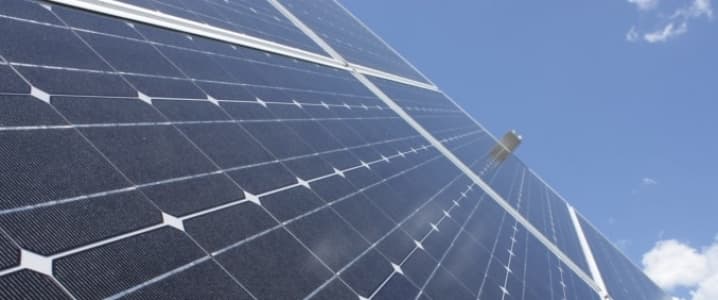India is making the push to become greener through the use of solar panels. The nation is lagging behind other countries in terms of renewables and has finally begun taking the steps to change. Prime Minister Narendra Modi’s latest mission is to increase manufacturing of solar panels and expand capacity across the country.
The Prayas initiative, the plan to accomplish such tasks, is still in development but will set a goal to create five gigawatts of solar capacity by 2019. The more long-term goal is to have raised capacity to 100 gigawatts by 2022 from the current capacity level of 45 gigawatts. Modi’s vision is for India to be completely self-sufficient in mass production, hence the slogan Make in India. Less importing of solar panel parts from China could save India a significant amount and stimulate the economy. This initiative has sparked international interests in the country bringing investors to India’s doorstep. The government is also trying to get households involved, which would expand the industry domestically. Dozens of manufacturers are gearing themselves to provide solar panels to consumers who are looking to save and go green.
Most cells and modules used in manufacturing solar panels are imported from China. In the first half of 2016, India imported 18 percent of China’s production, equivalent to $1.1 billion. India’s businesses lack the economies of scale necessary to effectively produce their own panels and the country altogether spends too much money investing in China. Modi’s plan also allows for the allocation of roughly 9 million rupees per megawatt manufactured, monetarily motivating companies. The state aid will be awarded to those who get selected via tender. With funding from the state and outside investments from other companies pouring in, India hopes manufacturers will finally be able to raise the capital resources needed to compete on this larger scale. Government officials hope that if India is able to ramp up solar energy production, they too could be exporters like their neighboring competitor. Related: Only Sentiment Matters: Why Oil Prices Are Heading Up Until November
The exchange rate between the two countries is currently 9.91 rupees for every Chinese Yuan. By capitalizing on solar manufacturing, India has the opportunity to steal China’s market share and increase economic growth. Indian officials claim the Prayas initiative has the potential to create thousands of jobs. This combined with an international interest in the industry is also beneficial and directly challenges China’s stake. Investors should buy rupees against the Chinese Yuan now before the Prayas initiative is officially released. The plan is to be discussed at the next finance ministry meeting next month.
Japanese SoftBank Group Corp. may be one of the companies manufacturing solar panels in India through a joint venture. The company already holds a $10 billion joint venture to manufacture panels in India with Foxconn Technology Group and Bharti Enterprises Pvt. but is considering dropping them for this project. Foxconn is public in Taiwan and Bharti has a subsidiary which is public in India named Bharti Airtel Limited. Both companies could suffer losses if SoftBank advances without them.
Manufacturers will surely benefit from the government’s plan. Companies like Moser Baer, Indosolar, and Swelect Energy are all creating cells and modules that go into solar panels in India. With government funding and the increased opportunities for business, these firms are highly incentivized to help India in their endeavors. Its probable investors could stand to profit if they long shares in any of these companies.
By Michael McDonald of Oilprice.com
More Top Reads From Oilprice.com:
- Oil Heavyweights Worry About Future Oil Supply
- Oil Titans Differ On Whether Prices Will Spike Or Remain Low
- Why Oil Could Head Back To $90 Sooner Than Thought



















Hope I have clarified the same.